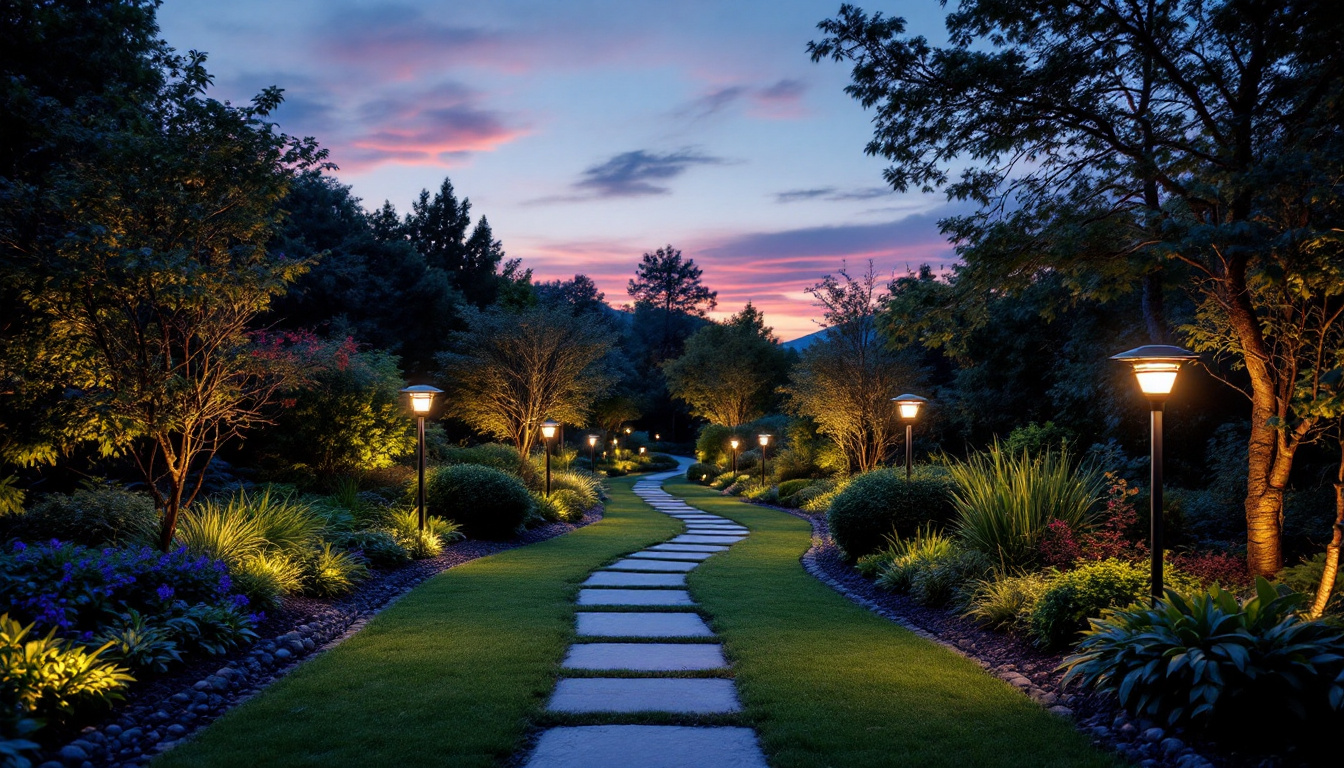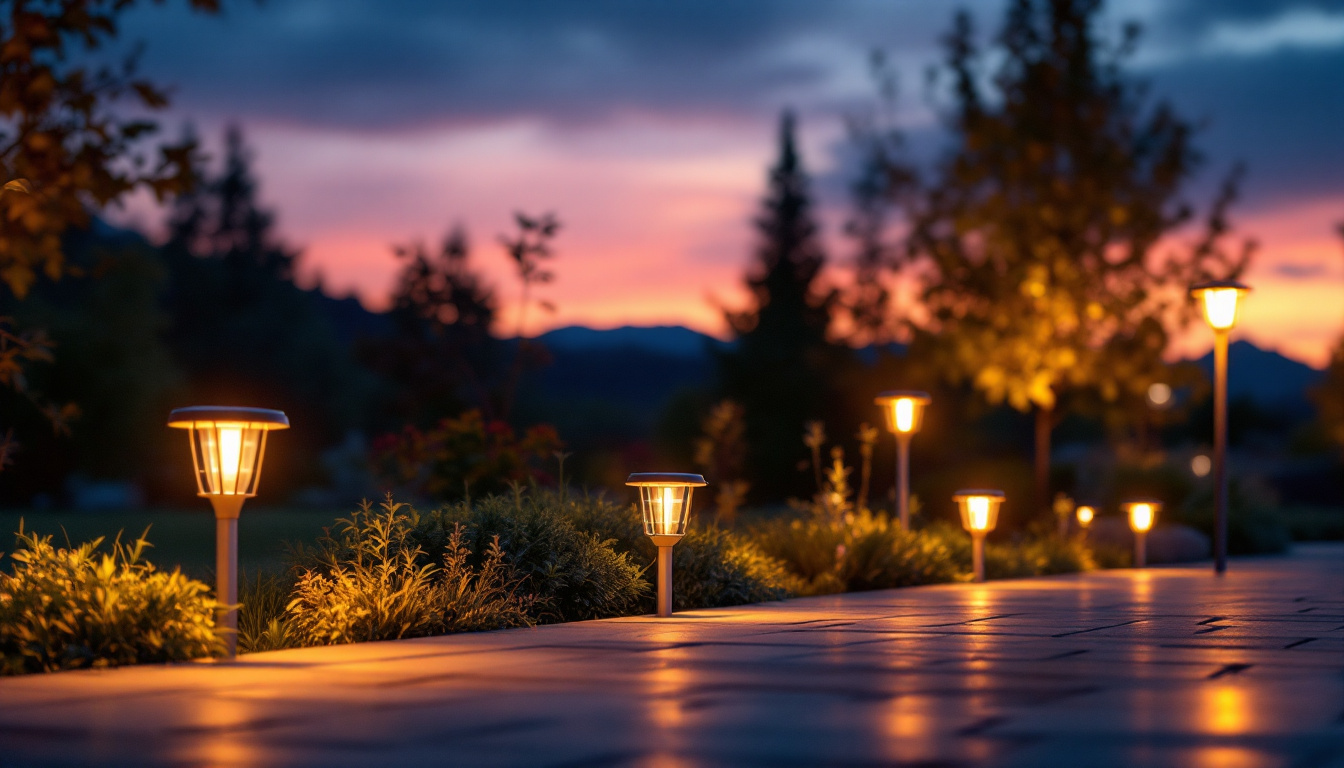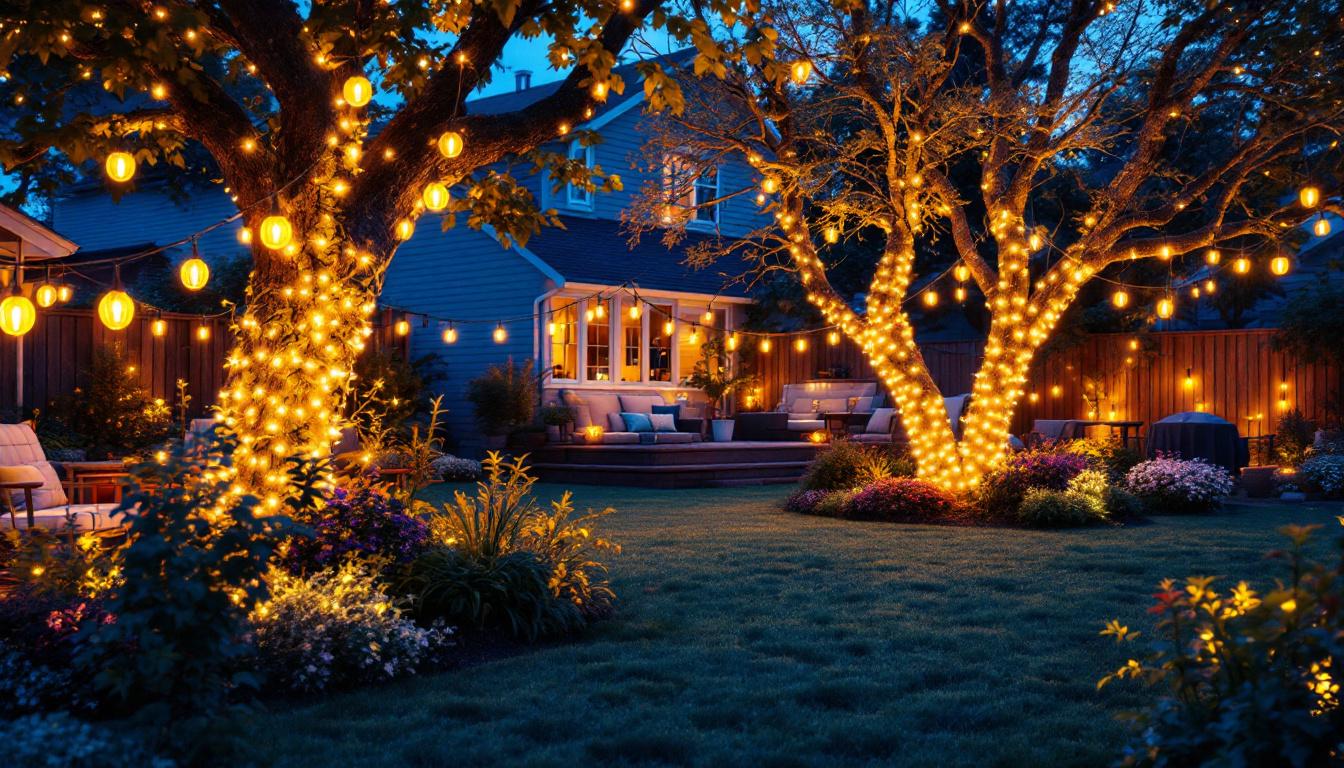
As the demand for sustainable and energy-efficient solutions continues to rise, landscape lighting has evolved significantly. solar landscape lights are becoming increasingly popular among homeowners and businesses alike. For lighting contractors, understanding the intricacies of solar landscape lighting can be a game-changer. This article aims to demystify solar landscape lights, providing essential insights and practical knowledge that contractors need to enhance their service offerings.
Solar landscape lighting utilizes solar panels to convert sunlight into electricity, which powers LED lights. This technology offers a range of benefits, including reduced electricity bills and minimal environmental impact. However, to effectively integrate solar lights into landscaping projects, contractors must grasp how these systems operate.
At the core of solar landscape lights is a solar panel that captures sunlight during the day. This energy is stored in rechargeable batteries, which power the lights at night. Most solar lights are equipped with light sensors that automatically turn the lights on at dusk and off at dawn, making them incredibly user-friendly.
Understanding the components is crucial. The solar panel, battery, LED bulb, and light sensor must all work in harmony to ensure optimal performance. Contractors should familiarize themselves with the specifications of different products to make informed recommendations to clients. Additionally, factors such as the geographical location and seasonal variations in sunlight can significantly affect the efficiency of solar lights. For instance, areas with longer daylight hours will yield better performance, while regions with frequent cloud cover may require more robust battery systems to ensure consistent lighting throughout the night.
Solar landscape lights come in various styles and functionalities, catering to different aesthetic preferences and practical needs. Common types include path lights, spotlights, floodlights, and decorative lights. Each type serves a unique purpose, whether illuminating walkways, highlighting architectural features, or creating ambiance in outdoor spaces.
Contractors should assess the specific requirements of a project before selecting the type of solar lights to use. For instance, path lights are ideal for guiding visitors along walkways, while spotlights can accentuate trees or sculptures. Understanding the nuances of each type can help contractors deliver tailored solutions that meet client expectations. Moreover, the design of solar lights has evolved significantly, with options that blend seamlessly into the landscape, such as solar rock lights or stake lights that mimic natural elements. This versatility not only enhances the visual appeal of outdoor spaces but also allows for creative lighting designs that can transform a garden or patio into a captivating evening retreat.
Solar landscape lighting offers numerous advantages that can enhance a contractor’s service portfolio. From cost savings to environmental benefits, these lights are an attractive option for many clients.
One of the most appealing aspects of solar landscape lights is their cost-effectiveness. Since they rely on sunlight, there are no electricity costs associated with their operation. This can lead to significant savings for homeowners and businesses over time.
Moreover, the installation process for solar lights is generally simpler and less labor-intensive than traditional wired lighting systems. This can result in lower installation costs, making solar lights an attractive option for budget-conscious clients. Additionally, many solar lights come with built-in motion sensors and timers, allowing users to optimize their energy usage further, which can lead to even greater savings on energy bills.
As sustainability becomes increasingly important, solar landscape lighting aligns perfectly with eco-friendly practices. By harnessing renewable energy, these lights contribute to reducing carbon footprints and promoting energy conservation.
Contractors can position themselves as environmentally conscious professionals by offering solar lighting solutions. This not only appeals to clients who prioritize sustainability but also enhances the contractor’s reputation in the industry. Furthermore, solar lights often use LED technology, which is more energy-efficient and has a longer lifespan compared to traditional bulbs. This means fewer replacements and less waste, further supporting a sustainable approach to landscaping. By incorporating solar landscape lighting into their offerings, contractors can also educate clients about the benefits of using renewable energy sources, fostering a greater awareness of environmental issues and encouraging more sustainable choices in their overall home or business design.
Despite the many benefits, solar landscape lighting is not without its challenges. Understanding these potential drawbacks is essential for contractors looking to provide comprehensive solutions.
The performance of solar landscape lights is inherently linked to sunlight availability. In regions with limited sunlight or during overcast weather, the efficiency of solar lights can be compromised. This may lead to reduced brightness or shorter operational hours.
Contractors should educate clients about the importance of selecting appropriate locations for solar lights. Areas that receive ample sunlight throughout the day will yield the best results. Additionally, offering hybrid solutions that combine solar and traditional lighting can help mitigate this issue. Furthermore, the angle and positioning of the solar panels can significantly affect their performance. Educating clients on how to angle the panels towards the sun’s path can optimize energy absorption and enhance overall functionality.
The market for solar landscape lights is saturated with products of varying quality. Some low-cost options may not perform well or may have a shorter lifespan, leading to dissatisfaction among clients.
Contractors must conduct thorough research and select reputable brands known for their quality and reliability. Providing clients with high-quality products can enhance satisfaction and lead to repeat business and referrals. In addition, it is beneficial to inform clients about the importance of warranties and customer support when selecting solar lighting solutions. A product backed by a solid warranty can provide peace of mind, ensuring that clients feel confident in their investment. Moreover, educating clients on maintenance practices, such as regular cleaning of solar panels and checking battery health, can further extend the life and performance of their solar landscape lighting systems.
Installing solar landscape lights requires careful planning and execution to ensure optimal performance and client satisfaction. Here are some best practices to consider.
Before installation, conducting a thorough site assessment is crucial. This involves evaluating the landscape, identifying potential obstacles, and determining the best locations for solar lights. Factors such as sunlight exposure, existing landscaping features, and client preferences should all be taken into account.
During the assessment, it may be beneficial to discuss the client’s vision and preferences. This collaborative approach can lead to a more satisfying outcome and ensure that the lighting design aligns with their expectations.
Proper placement and spacing of solar lights are vital for achieving the desired illumination effect. Lights should be positioned to maximize sunlight exposure while providing adequate coverage for the intended area.
For path lights, a spacing of 6 to 8 feet apart is generally recommended, while spotlights may require closer placement depending on the desired effect. Contractors should also consider the height and angle of the lights to avoid glare and ensure even illumination.
While solar landscape lights require less maintenance than traditional lighting systems, some care is still necessary to ensure longevity and optimal performance.
Dust, dirt, and debris can accumulate on solar panels, reducing their efficiency. Regular cleaning of the panels is essential to maintain optimal performance. A simple wipe with a damp cloth can often suffice, but contractors should advise clients on how to care for their lights properly.
Additionally, checking for any obstructions, such as overgrown foliage, can help ensure that solar panels receive maximum sunlight exposure.
Over time, the rechargeable batteries in solar lights may lose their ability to hold a charge. Contractors should inform clients about the typical lifespan of these batteries and when they may need replacement. Providing guidance on battery maintenance can enhance the overall satisfaction of clients.
The landscape lighting industry is continually evolving, with new technologies and trends emerging regularly. Staying informed about these developments can help contractors remain competitive.
As smart home technology becomes more prevalent, the integration of smart features into solar landscape lighting is on the rise. Smart solar lights can be controlled remotely via smartphone apps, allowing users to adjust brightness levels, set timers, and even change colors.
Contractors who embrace this trend can offer clients innovative solutions that enhance convenience and functionality. Understanding the technology behind smart solar lights will be essential for successful integration into projects.
Design trends are also influencing solar landscape lighting. Manufacturers are increasingly focusing on creating aesthetically pleasing designs that blend seamlessly with outdoor environments. From sleek modern styles to vintage-inspired fixtures, there are options to suit various tastes.
Contractors should stay updated on the latest design trends to provide clients with attractive and contemporary lighting solutions that enhance their outdoor spaces.
Solar landscape lighting presents a wealth of opportunities for lighting contractors. By understanding the technology, benefits, challenges, and best practices associated with solar lights, contractors can offer valuable solutions that meet the evolving needs of clients.
As the industry continues to shift towards sustainability and innovation, staying informed about emerging trends will be crucial for success. By embracing solar landscape lighting, contractors can not only enhance their service offerings but also contribute to a greener future.
In summary, solar landscape lights are more than just a trend; they are a practical and environmentally friendly solution that aligns with modern consumer values. By demystifying this technology and understanding its intricacies, lighting contractors can position themselves as leaders in the field, ready to meet the demands of a changing market.
Ready to elevate your landscape lighting projects with the best solar solutions on the market? Look no further than LumenWholesale, where we provide lighting contractors with superior, spec-grade lighting products at unbeatable wholesale prices. Our commitment to quality and affordability ensures that you can offer your clients reliable, high-performance solar landscape lighting without breaking the bank. Take advantage of our hassle-free bulk buying and free shipping to get premium lighting at the best value. Don’t let hidden fees or compromises dim your project’s potential. Discover wholesale lighting at the best value today and light up your business with LumenWholesale.

Discover why pot lights are revolutionizing the lighting industry for contractors.

Discover how solar lights can transform your outdoor spaces with innovative and eco-friendly lighting designs.

Discover the benefits and installation tips of solar LED lamps in this comprehensive guide tailored for lighting contractors.

Transform outdoor spaces with our comprehensive guide on string lights for lighting contractors.